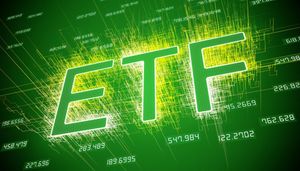
Databricks and the London Stock Exchange Group (LSEG) have announced a groundbreaking strategic partnership that will integrate LSEG's extensive financial data directly into the Databricks platform. This collaboration marks a significant leap forward in applying agentic AI within financial markets, promising to revolutionize how institutions leverage data for analytics, AI applications, and autonomous agent-based workflows. The move is set to empower financial institutions with unprecedented speed and efficiency in deriving actionable insights from vast datasets.
This alliance signals a pivotal shift, moving the financial sector beyond mere AI experimentation towards enterprise-scale deployment of intelligent, goal-driven systems. By making LSEG's trusted data natively accessible for AI within the Databricks environment, the partnership aims to dismantle long-standing data silos and streamline access to live financial intelligence, ultimately accelerating innovation and fostering a more competitive landscape.
A New Era for Financial Intelligence: What Happened and Why It Matters
The core of this transformative partnership involves LSEG (LSEG: LSE) delivering its industry-leading financial data directly into the Databricks (DATABRICKS: PRIVATE) platform via Delta Sharing, Databricks' open-source data sharing approach. This integration is designed to empower financial institutions to build and deploy sophisticated AI agents using Databricks' "Agent Bricks" framework. Initially, the rollout will encompass Lipper Fund Data & Analytics and Cross Asset Analytics, including historical data, with future plans to expand to a comprehensive suite of AI-ready datasets such as pricing, reference data, models (like StarMine), fundamentals, estimates, economics, and tick history, all discoverable on the Databricks Marketplace.
Agentic AI, as envisioned by Databricks, represents autonomous, goal-driven systems that leverage large language models (LLMs) and other components to execute complex tasks through iterative reasoning and interaction with external tools and data sources. Unlike conventional AI, these agentic systems possess situational awareness, persistent memory, multi-modal tool orchestration, and self-reflective planning capabilities. The Databricks Agent Bricks are specifically engineered to drastically accelerate the deployment of these AI agents, potentially reducing development timelines from months to mere days for production-ready solutions.
This partnership is crucial because it directly confronts a persistent challenge in financial services: the struggle to keep pace with dynamic markets due to often outdated, batch-based data delivery systems. Financial analysts and data scientists frequently dedicate a disproportionate amount of time to data wrangling and integration rather than to the critical task of building and refining models. By unifying financial data and rendering it natively accessible for AI, this collaboration aims to significantly streamline access to live financial data, thereby enhancing decision-making, accelerating innovation, and helping firms maintain a crucial competitive edge in a rapidly evolving market. It truly signifies a strategic shift from theoretical AI exploration to practical, enterprise-wide implementation.
Market Ripple Effects: Winners and Losers in the AI Race
The integration of Databricks' agentic AI with LSEG's data is poised to trigger several profound shifts across financial markets. The immediate impact is expected to be a dramatic increase in speed and efficiency. Financial teams will gain the ability to rapidly construct and deploy AI agents for real-time investment analytics, risk management, and trading workflows, drastically cutting down deployment times. This means that tasks like stress-testing complex portfolios could be executed in seconds, and asset managers could run comprehensive backtests on years of historical data without the traditional overnight waits.
Furthermore, the synergy will enable real-time, actionable insights. AI agents powered by LSEG data can automate mundane tasks, analyze intricate market trends, and provide instantaneous insights, fostering more agile and informed decision-making across the board. This enhancement will extend across various critical functions: in investment analytics, it will power sophisticated market intelligence, backtesting, and portfolio optimization for smarter, AI-driven investment strategies; in trade analytics, it will facilitate real-time market analysis, transaction cost analysis (TCA), predictive forecasting, and advanced algorithmic trading; and in risk management, it will unify and strengthen oversight for market, credit, and counterparty risk through AI-driven surveillance, exposure monitoring, and real-time compliance.
The democratization of data is another significant outcome. By embedding LSEG's trusted, high-quality data directly into the Databricks ecosystem, financial institutions will gain frictionless access to structured information, effectively breaking down the data silos that have historically impeded innovation and agility. This open approach promises to level the playing field for many firms.
In terms of market winners and losers, both Databricks and LSEG are clear beneficiaries, expanding their respective footprints in the lucrative financial sector. Adopting financial institutions—banks, hedge funds, asset managers, and trading firms—that effectively implement this technology will secure a substantial competitive advantage through superior data analysis, faster decision-making, and optimized operations. Conversely, legacy data providers and analytics platforms, such as Bloomberg (BBNG: US) and FactSet (FDS: NYSE), long dominant in financial data terminals, will face intensified competition from LSEG's enhanced, AI-ready data offerings through Databricks. Firms slow to embrace AI and clinging to outdated, batch-based data processes risk falling significantly behind in efficiency, insight generation, and overall market competitiveness.
Broader Implications: A Shift Towards Autonomous Finance
This strategic partnership aligns perfectly with several overarching industry trends that are reshaping the financial landscape. Firstly, it underscores the accelerating rise of agentic AI, highlighting the industry's definitive shift towards more autonomous, goal-driven AI systems capable of complex reasoning and taking decisive actions. This move is consistent with analyses from leading industry observers, such as Gartner's 2025 Magic Quadrant for Data Science and Machine Learning Platforms, which heavily emphasizes this paradigm shift.
Secondly, the collaboration highlights the increasing demand for sophisticated data intelligence platforms. The initiative underscores the critical need for unified platforms that seamlessly integrate data management, robust governance, and advanced AI capabilities to effectively tackle the growing complexity of financial data and AI models. This integrated approach is becoming essential for navigating modern financial challenges.
Thirdly, it directly addresses the financial industry's "insatiable appetite" for high-quality, AI-ready, and real-time data to accelerate analytics and AI workloads. The ability to access and process vast amounts of data instantaneously is no longer a luxury but a necessity for competitive advantage. Finally, this partnership is part of a broader trend of significant AI investments across the financial sector, as firms worldwide race to integrate generative AI and agentic capabilities to secure and maintain competitive advantages.
Key players involved include Emily Prince, Group Head of Analytics & AI at LSEG, and Stephen Orban, SVP of Product Ecosystem & Partnerships, along with Ali Ghodsi, Co-founder and CEO of Databricks. The partnership was officially announced on September 23, 2025, and has been met with positive reception from industry experts who see it as a pivotal step toward democratizing advanced AI in finance. However, investors remain keenly focused on demonstrating a tangible Return on Investment (ROI) from such AI initiatives, with Databricks emphasizing its commitment to "data intelligence" for practical enterprise tasks over speculative "super intelligence."
The potential ripple effects of this high-profile integration in the financial sector are substantial. Its success could inspire similar partnerships and widespread deployments of agentic AI across other data-intensive industries. It might also exert pressure on other cloud data platforms and financial data providers to develop comparable AI agent frameworks and seamless data integration solutions, fostering greater competition and innovation across the broader AI and data ecosystem. Regulatory implications are also significant. While the partnership lowers barriers to AI adoption, challenges related to data privacy and the costs of integrating complex systems persist. Financial institutions must rigorously navigate existing regulations such as GDPR and SEC rules when implementing AI agents. Databricks' Agent Bricks are designed with built-in accuracy, governance, and cost efficiency, with data governance being a foundational element for meeting regulatory demands, explaining AI results, and controlling for algorithmic and data-centric bias. Regulators are increasingly scrutinizing AI applications, especially "black box" systems that lack transparency in their decision-making processes.
The Road Ahead: What to Pay Attention to Next
Looking ahead, the short-term focus will be on the successful implementation and expansion of LSEG's data offerings within the Databricks platform. This includes the planned incorporation of more sophisticated models for economic forecasting and historical analysis, which could further enhance the predictive power available to financial institutions. The industry will be closely watching for initial case studies and demonstrable successes from early adopters, particularly regarding measurable improvements in operational efficiency, risk management, and investment performance.
In the long term, this partnership could mark a crucial step in LSEG's evolution, potentially solidifying its transition from primarily an exchange operator to a global analytics powerhouse. The emphasis will remain squarely on demonstrating clear and quantifiable ROI for AI investments. Financial institutions will need to strategize on how to best integrate these agentic AI capabilities into their existing workflows, potentially requiring significant internal training and a cultural shift towards more AI-driven decision-making.
Potential strategic pivots or adaptations required for market participants include a re-evaluation of their current data infrastructure and AI strategies. Firms that have previously invested heavily in proprietary, closed-source data solutions may need to consider more open, integrated platforms. New market opportunities may emerge for specialized AI development firms that can assist financial institutions in customizing and deploying agentic AI solutions. Conversely, challenges will arise for those unable to adapt quickly, risking technological obsolescence and competitive disadvantage. Potential scenarios range from widespread adoption leading to a significant acceleration in financial innovation to a more cautious, phased approach as regulatory frameworks catch up with technological advancements.
Conclusion: A Paradigm Shift in Financial Markets
The Databricks and London Stock Exchange Group partnership represents a significant paradigm shift in how financial markets will operate, moving towards a future powered by intelligent, autonomous AI agents. The immediate impact will be felt in the dramatic increase in speed and efficiency, enabling financial teams to derive real-time, actionable insights from vast datasets. This collaboration is set to democratize access to high-quality financial data, breaking down long-standing silos and fostering a more agile and innovative financial ecosystem.
Moving forward, the market will be characterized by intensified competition among data providers and analytics platforms, with traditional players facing significant pressure to evolve their offerings. Investors should closely watch for the tangible ROI generated by early adopters of this technology, as well as the expansion of LSEG's data offerings within the Databricks platform. The success of this initiative will likely dictate the pace of agentic AI adoption across other data-intensive industries.
Ultimately, this partnership underscores the critical importance of embracing advanced AI and integrated data platforms to maintain a competitive edge in an increasingly complex and fast-paced financial world. The lasting impact will be a more efficient, insightful, and responsive financial market, driven by the power of agentic AI.
This content is intended for informational purposes only and is not financial advice


















